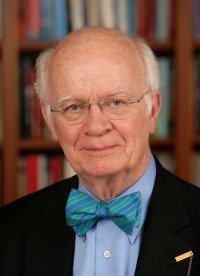Translating the faith: Translators and garblers
Chinese translators and Smithsonian Institution label-writers can be garblers. Let me illustrate: Soli Deo Gloria, an adventuresome group on whose board I have served, charters and sees to the performance of a major new choral work each year. It also sponsors an annual choral-orchestral concert in China. John Nelson, who conducts, brought back the program for his German Requiem by Brahms. The words were translated by Bright Sheng, who, they tell me, did well enough with his task; if there are inelegancies, they are no worse than ours when we translate Chinese into English.
Since the audience in Shanghai included English-readers, someone translated the program notes from Chinese back to English for them. Obfuscation and chaos resulted. For instance, “I. Blessed are they that mourn” receives this note: “The first movement is chorus Worry about Happiness can bring along Fortune, and its color is gloomy . . .” “II. Behold all flesh is as grass”. . . is treated thus: “People seem to be Slaughtered gives people a feeling of mourning march” . . .
Skip to “V. “Ye now are sorrowful” receives this condensation: “You are Melancholic presents the beautiful soprano which is just like sweet dew moistening people’s hearts.” And “VII. Blessed are the dead” is condensed as: “The Dead are Happy takes concerted action. Through the commemoration of death, it condones the live to convert sorrow into strength and hope.”
John Nelson said the event went well. Bravo. Encore.
If the Chinese hosts of such events, who are not allowed to deal frontally with religion, have some problems in presenting them, Americans (of whom 80 percent-plus are “Judeo” and “Christian”) should not. But columnist Terry Mattingly spotted what Smithsonian captioners did to dim, dumb down and de-Christianize two paintings by Howard Finster, the recently deceased folk artist. I will quote two of Finster’s own unorthodoxly spelled and badly grammared word-filled paintings, and then show what the Smithsonian did:
“If You Only Had One Sweet Son And You Gave His Life To Save Ten Wicked Men. And They Returned And Denied That You Gave Your Only Son For Them And Said You Child Never Exist No One Died For Us.” And: “Please Go Right Now And Call You Child To You. And Measure You Love For Him And Turn And Look At The Most Sinful Man You Know And Think If You Would Trade Your Presus Son For Him. God Is Love.”
Miss Rogers, my English teacher back in Battle Creek, Nebraska, in 1941-42, would have given those wordings a D-minus, though wealthy Americans spend thousands of dollars to buy Finsters. As Finster advocate Frederica Mathews-Green points out, the messages are pretty simple: “Repent.”
All this is too much for the Smithsonian. A sign posted in the exhibit hall says: “The historical, popular and biblical subjects of Finster’s portraits embody his concept of the inventor as someone whose creative process will provide the world’s salvation.”
Thanks. We would not have understood the artist’s explicit if grammatically and spiritually anarchic work without that kind of abstract help. I don’t want to join the company of whiners, who suspect secular humanist or politically correct pluralist hands in such lines. But one does wonder whether Smithsonian planners think that other faiths—Buddhist, Hindu, Enlightenment, etc.—have to be similarly stepped away from, abstracted and made acceptable. Have we had our own Cultural Revolution? Fortunately, Finster speaks for himself, undimmed and undumbed.




